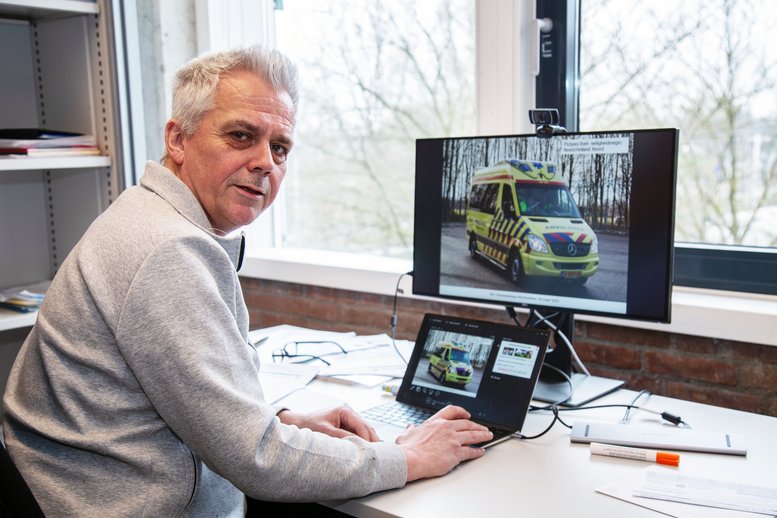Over 1 per cent of the Dutch population is currently active on a platform for citizen assistance. Think, for instance, of HartslagNu for resuscitation and Burgernet for tracing people, or Ready2helpers of the Red Cross, which deploys volunteers during high water. So there are already quite a lot of people willing to help in emergencies, but with more citizen aid workers, first aid could get going even faster. And that could save lives. But where should organizations look for the most new volunteers? Rob van der Mei (Stochastics group) builds mathematical models that optimize the recruitment and calling up of volunteers.
Fire brigade
For example, he is working with the Amsterdam-Amstelland fire brigade, which has the ambitious goal of recruiting 100,000 citizen volunteers over the next few years. Thought behind this: the fire brigade is fast, the neighbour is faster. Van der Mei calculated several scenarios that show by how many seconds the response time decreases when deploying different numbers of citizen responders. If there are 100,000 volunteers - optimally distributed across the region - the response time drops by four minutes (the national average is eight minutes) . If you have 50,000 volunteers, the gain is still large: three minutes and 26 seconds. And are they on bikes? Then subtract another 50 seconds for each scenario.
CPR
Another collaboration arose at the Free University, where Caroline Jagtenberg developed a model that allows you to see where you need volunteers. Jagtenberg is a former oio within the Stochastics group and a former PhD with Van der Mei. She got the ideas for her research at the University of Auckland in New Zealand. In Auckland, the ambulance service works with the GoodSAM system, which calls trained volunteers for resuscitations, as they can often get to the scene faster. Jagtenberg: "Based on their data, I was able to build a model that allows us to estimate where in the city many volunteers are needed, given that people move around a city quite randomly during the day."
No unnecessary calls
This model, published in April in the scientific journal Management Science, can also be used in other countries that want to increase their use of citizen assistance. With this study in hand and the fire service scenarios, Jagtenberg, Van der Mei and their Rotterdam colleague Pieter van den Berg submitted a project proposal to TKI Dinalog. This proposal - titled 'Strategic Prescriptive Response for Immediate Needs Through Empowered Residents', SPRINTER for short - was honoured last year.
Van der Mei: "With SPRINTER, we want to improve the deployment of volunteers in emergency services. We do this by developing mathematical models based on data and data analysis of 'Community First Responder (CFR) systems'." Project leader Jagtenberg adds: "We figure out how volunteers can be deployed in the best way, quickly and effectively, but without overloading people. You don't want volunteers to be called up all the time unnecessarily."
The researchers are working with public and private partners involved in citizen assistance: the Red Cross, the Amsterdam-Amstelland Fire Service, Rotterdam Rijnmond Safety Region, Beep for Help, LIVES, NIPV and Axira.

